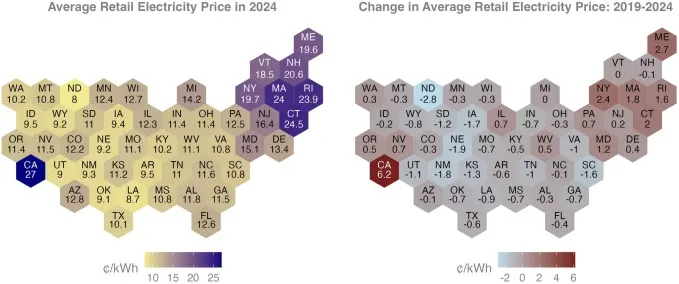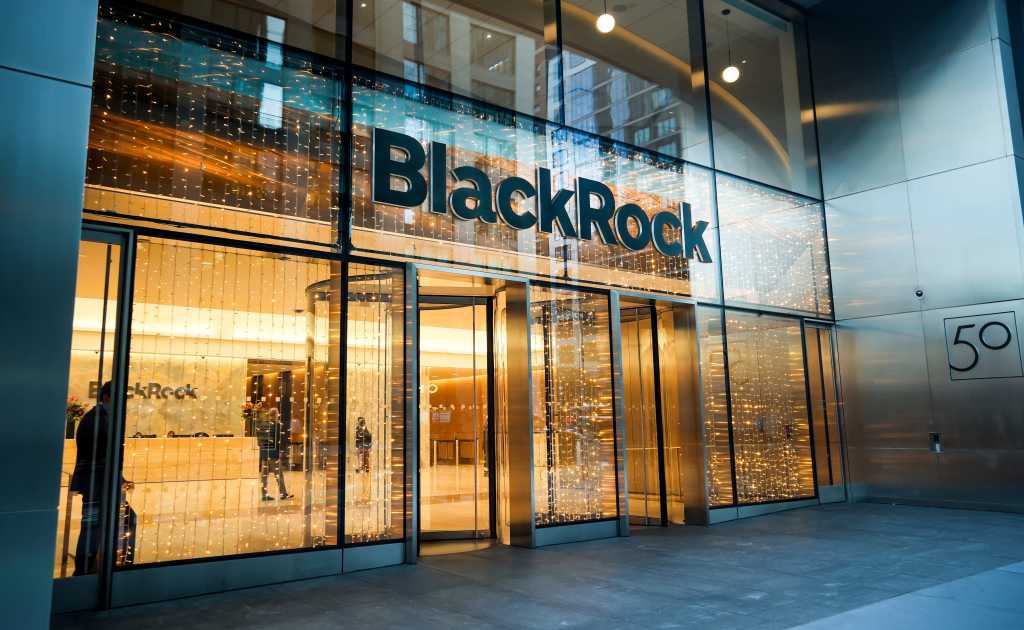Residential electricity retail prices rose more rapidly than commercial and industrial prices from 2019 to 2024, according to a study released last week by the Lawrence Berkeley National Laboratory.
Nationwide, average residential prices jumped 27% to 16.5 cents/kWh in the five years since 2019 while average commercial prices increased 19% to 12.8 cents/kWh and industrial prices climbed 19% to 8.1 cents/kWh, the LBNL researchers said in a summary of the report examining factors that affect electricity prices.
Overall retail electricity prices fell in 37 states from 2019 to 2024 when adjusting for inflation, the researchers said. Driven by wildfire-related costs, inflation-adjusted electricity prices surged 6.2% in California — the most among states, according to the report. Real prices also increased in the Northeast in the five-year period.

Optional Caption
Last year, retail electricity prices ranged from less than 8 cents/kWh in North Dakota to more than 27 cents/kWh in California, according to the LBNL report.
The LBNL researchers found that state energy policies can contribute to rising electricity prices.
“States with the largest price increases in recent years typically featured shrinking customer loads — partially linked to growth in net metered behind-the-meter solar — and had [renewable portfolio standard] programs in concert with relatively costly incremental renewable energy supplies,” the researchers said.
States with RPS programs that called for new supplies in the last five years increased retail electricity prices by about 0.4 cents/kWh, according to the study. However, electricity prices appear unaffected by “market-based” utility-scale renewable energy projects built outside of RPS mandates, the LBNL researchers found.
Also, while behind-the-meter solar cut net electricity load in some states — by more than 5% in California, Maine and Rhode Island, for example — it is linked to higher electricity prices, according to the study.
“Given the disconnect between rate structures and cost structures under many net metering programs, and the financial cost of policy support, our regression results indicate that these load reductions were associated with increased retail prices for the broader customer base,” the researchers said in the report.
The LBNL researchers also found that electricity prices charged by investor-owned utilities are higher and have risen faster than those charged by public power utilities. Overall, IOU inflation-adjusted spending on distribution and transmission increased from 2019 to 2024 while generation costs declined, according to the report.
Generally, load growth helped depress electricity prices in the last five years, the researchers found.
“It remains unclear whether broader, sustained load growth will increase long-run average costs and prices,” the researchers said. “In some cases, spikes in load growth can result in significant, near-term retail price increases.”
Separately, the Bank of America released a report Friday that said the growing demand for electricity generation capacity and grid investments, partly due to data centers, appears to be pushing up electricity bills.
“Rising demand for electricity from both data center development and manufacturing growth is already being reflected in residential customer rates,” David Michael Tinsley, Bank of America Institute senior economist, said in the report.
The rate increases are driven by transmission and distribution system upgrades needed for data centers that are paid by all ratepayers as well as higher energy and capacity pricing, Tinsley said.
Through July this year, nationwide retail electricity prices increased 4.4% compared to the same period in 2024, according to the LBNL report. Meanwhile, pending rate hike requests — mainly from IOUs — are at their highest level since the 1980s, suggesting electricity price increases will continue, the researchers said.
Hurricanes, storms and wildfires can raise retail electricity prices through short-term recovery and rebuilding, and longer-term costs such as infrastructure hardening, operational expenditures and liability insurance bought by utilities.






















